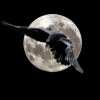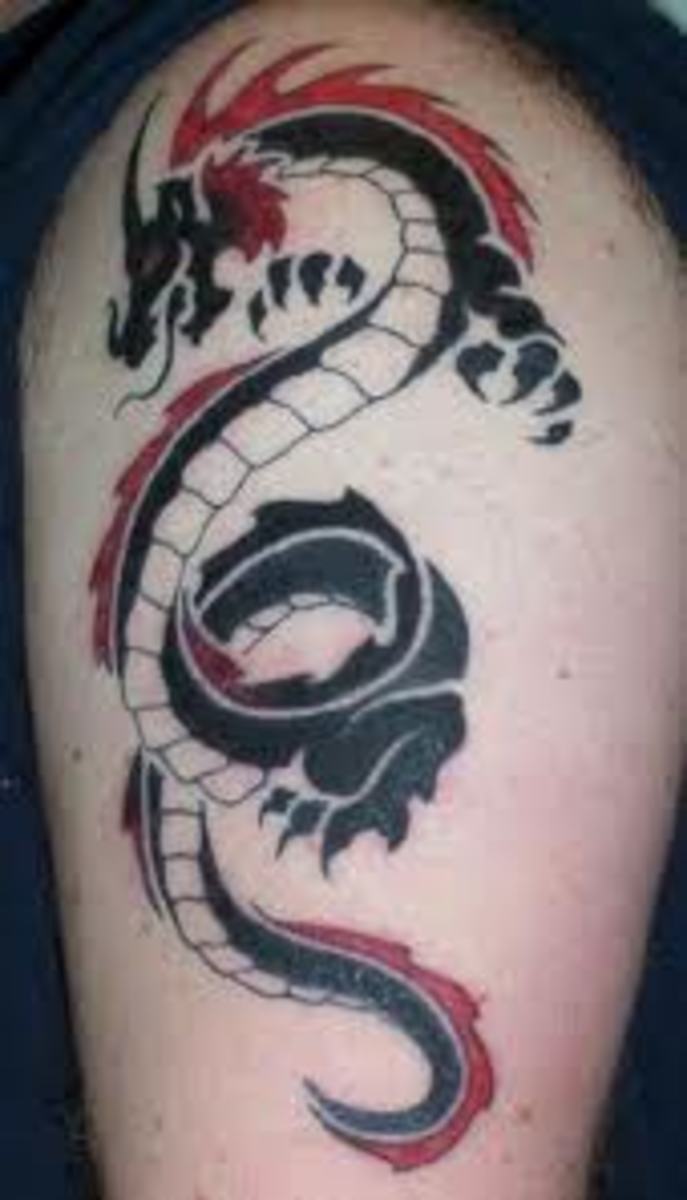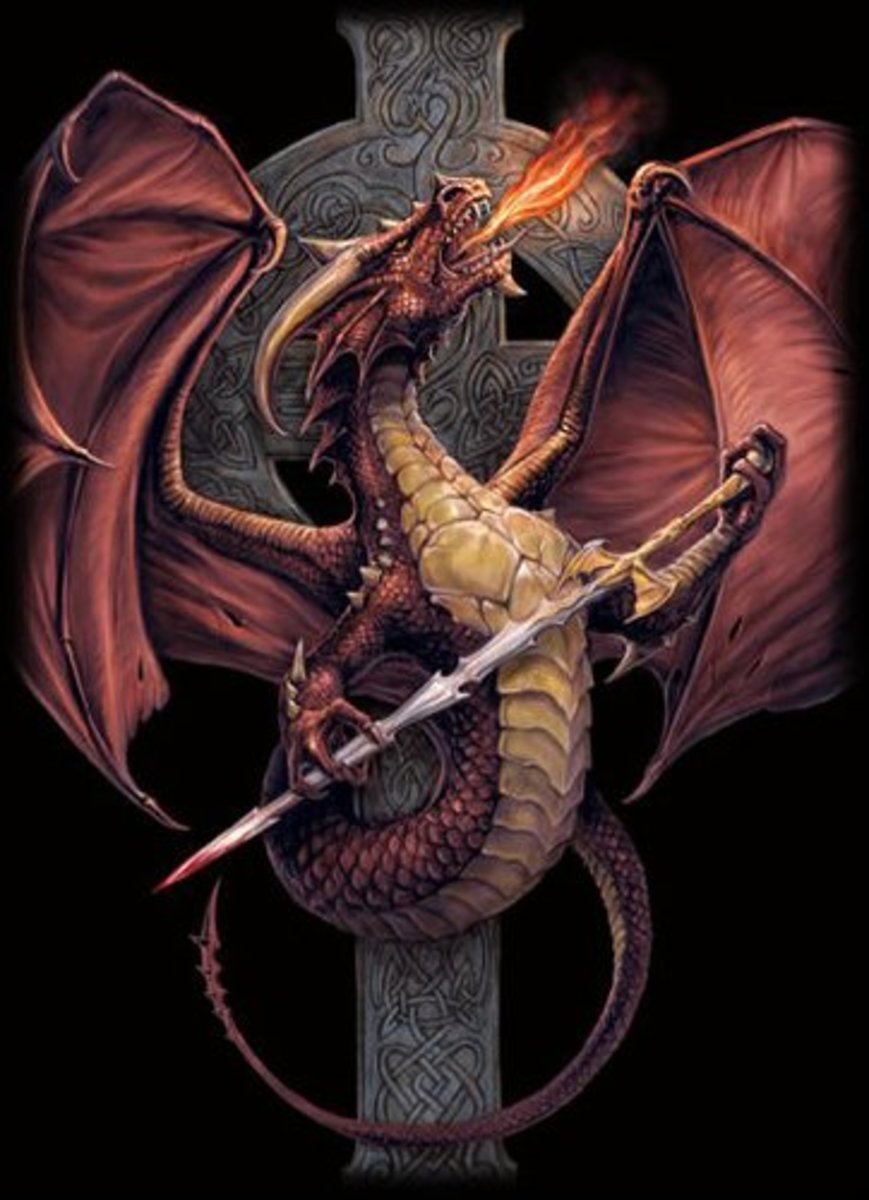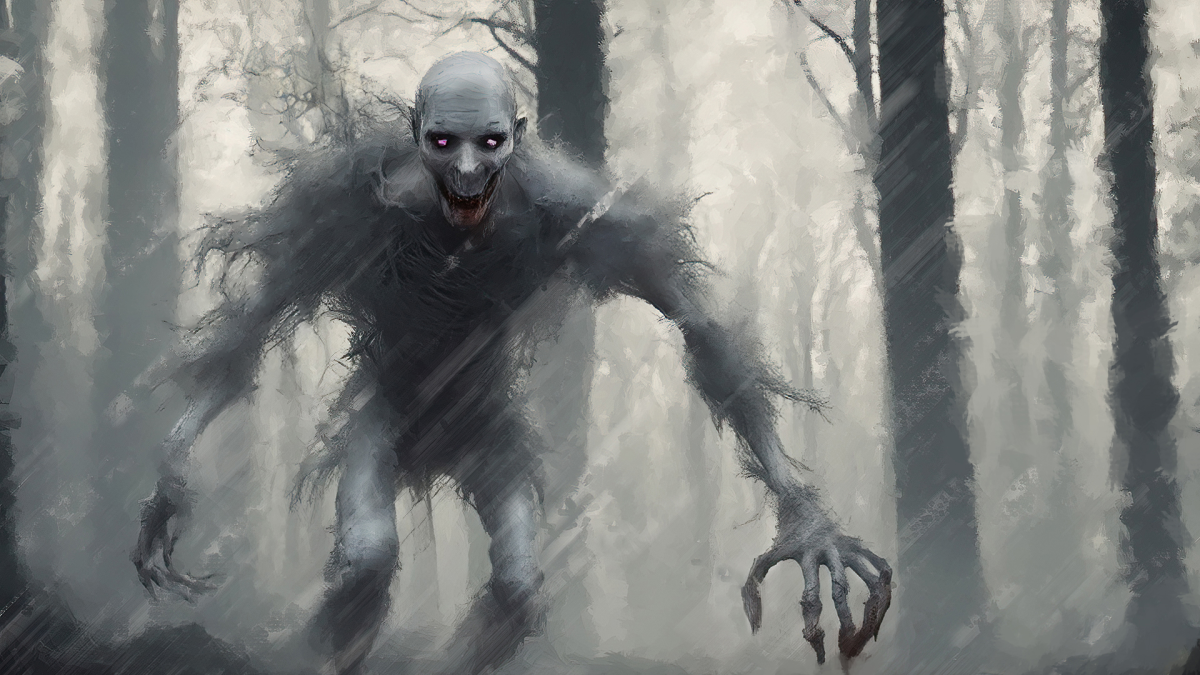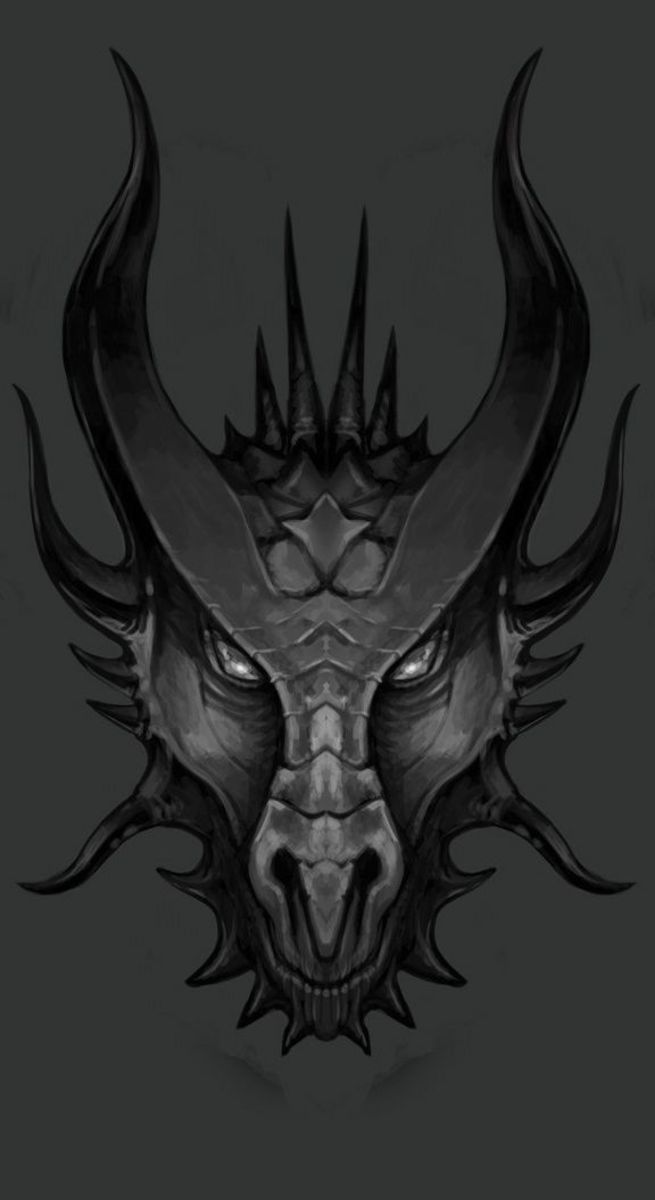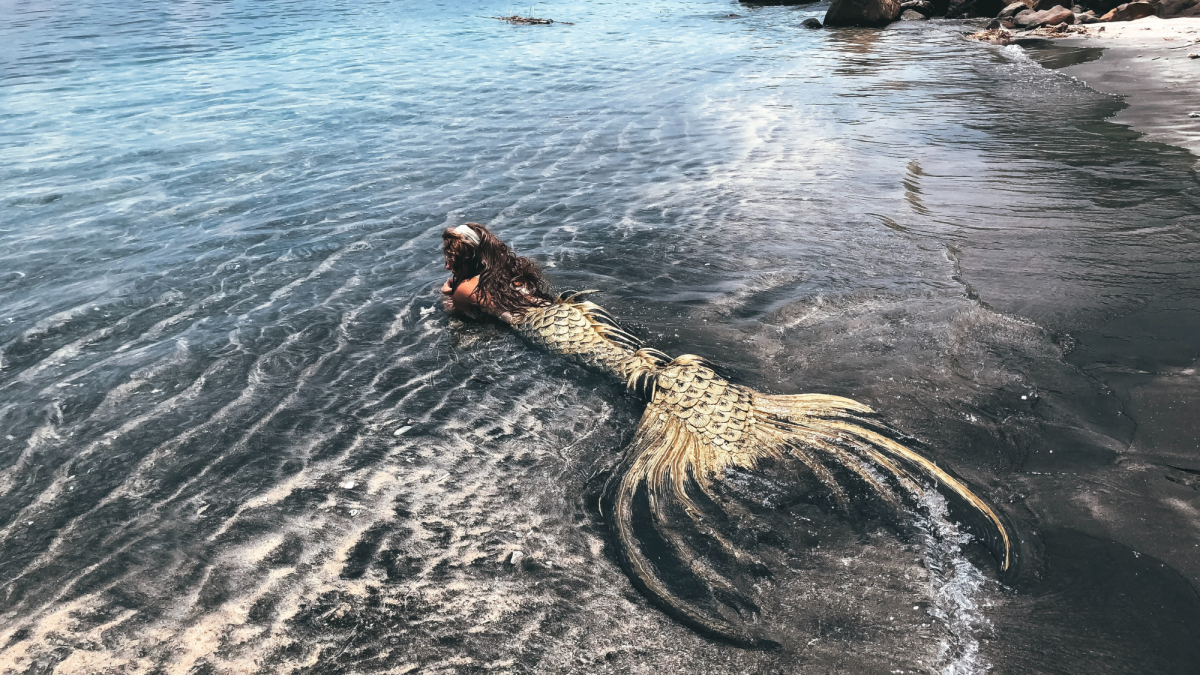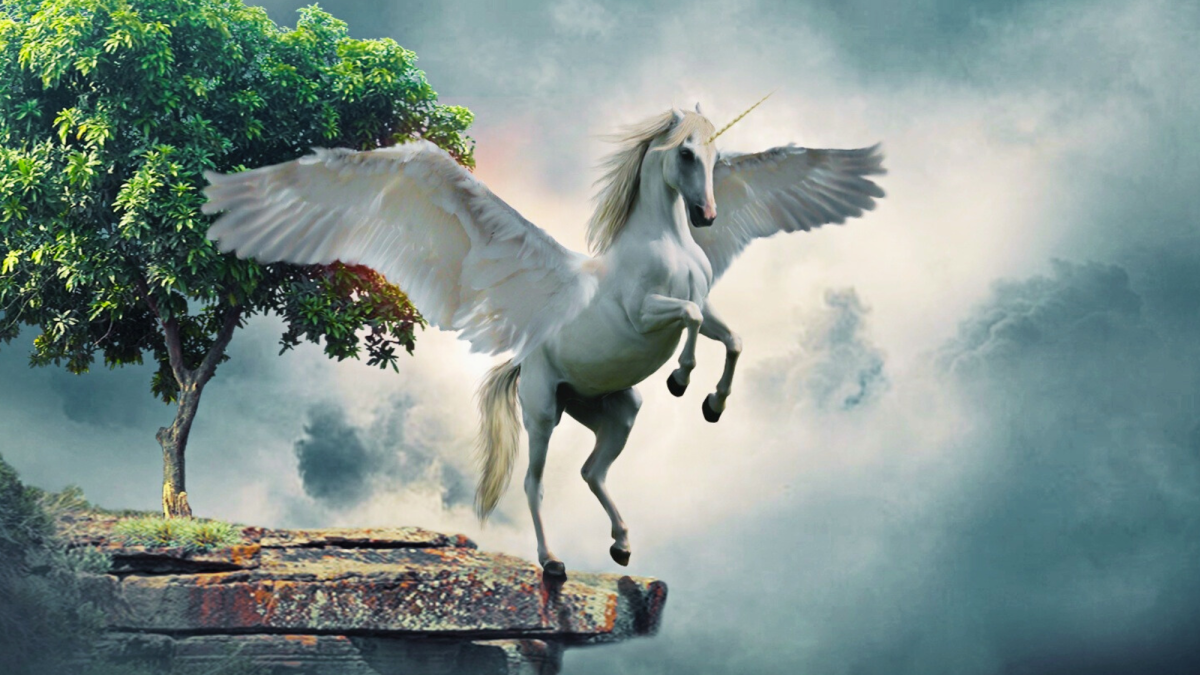- HubPages»
- Education and Science»
- Sociology & Anthropology»
- Folklore & Mythology»
- Legendary Creatures & Cryptids
Mythical Creatures - Dragon (Western)
Note: This is an extremely basic article (I'm only covering Western dragons). Dragons are very complex and come in hundreds of different types. If you want me to write more in depth about any dragon breed, let me know in the comments :)
Western Dragon
When you think of a dragon, chances are that you think of a Western Dragon. Also called European or Medieval dragons, they were generally considered to be brutal, greedy, and cruel. They were often portrayed battling knights or laying on heaps of treasure.
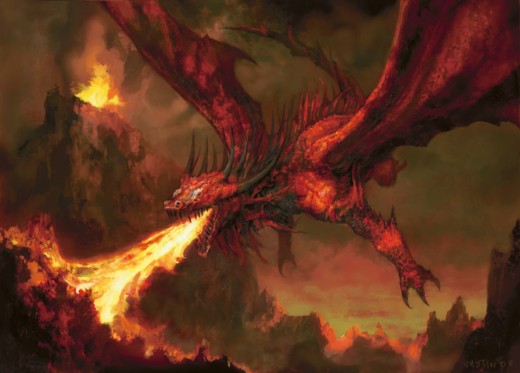
Combat
Dragon
The typical dragon fought with fire, their claws, and sometimes even their tails. They commonly had a body like a huge red lizard with bat wings, and they breathed fire. Their most commonly used weapon was fire, and many images showed them soaring over a village, eradicating it with its fire.
Knight
Humans had very few weapons against dragons. Many stories about dragon fights include a brave knight stabbing a dragon with his sword, but this would have been somewhat unrealistic. It's more likely that they would have been fought with ranged weapons such as spears, bows, and nets. The nets would be most effective when the dragon was in the air, because its wings would have become tangled in it, causing it to fall to the earth.
Types of Dragons
As with phoenixes, different regions of Europe had different dragons. Some examples include modern (fire-breathing), Germanic, Celtic, Slavic, Iberian, and Italian.
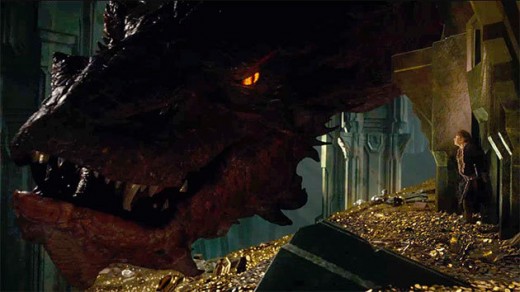
Modern
This is the most basic form of dragon. It is a winged, huge, red, fire-breathing lizard that commonly appears in media today. It commonly sets up its underground lair near a village to raid for sheep and treasure. One example of it in media today is Smaug from the Hobbit.
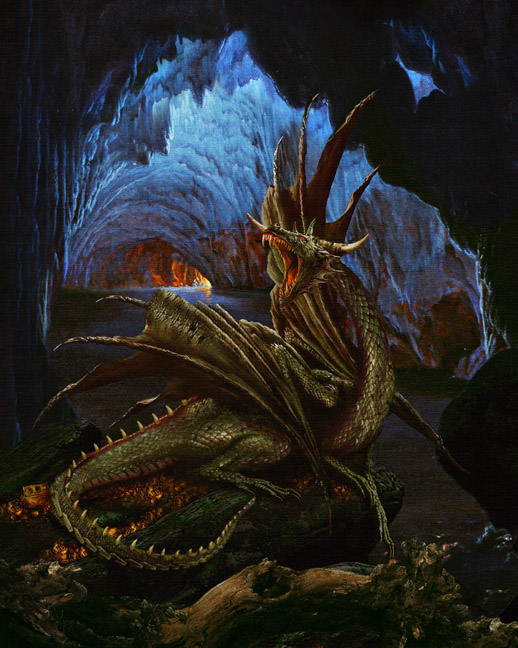
Germanic Europe
Unlike dragons from many other regions, there are several species in Germanic Europe and all of them have names. These are a few of the most famous ones:
- Níðhöggr, who gnaws at the roots of Yggdrasil, the World tree;
- Jörmungandr, Miðgarðsormurinn (Icelandic), Midgårdsormen (Swedish and Danish), Midgardsormen (Norwegian), the giant sea serpent which surrounds Miðgarð, the world of mortal men;
- Fafnir, which had turned into a dragon because of his greed, and was killed by Sigurd;
- Lindworms, monstrous serpents of Germanic myth and lore, often interchangeable with dragons;
- Landvættur, the benevolent dragon with whom King Harald Bluetooth's servant met inVopnafjörður according to Heimskringla, and also depicted on the Icelandic Coat of Arms;
- The dragon encountered by Beowulf.
(Credit for the above list goes to Wikipedia)
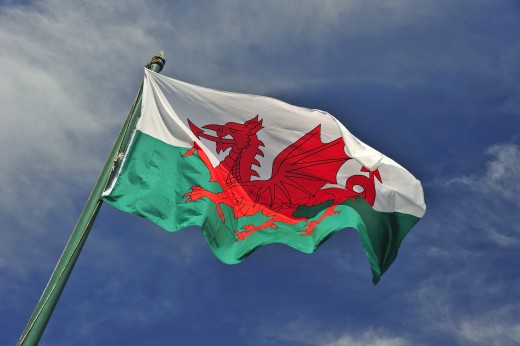
Celtic Europe
The red dragon is most commonly associated with Wales, possibly due to the Arthurian legend where Myrddin has a vision of the red dragon. Because of this, the legendary house of Pendragon and Celtic Britain have become associated with the Welsh dragon standard because of this.
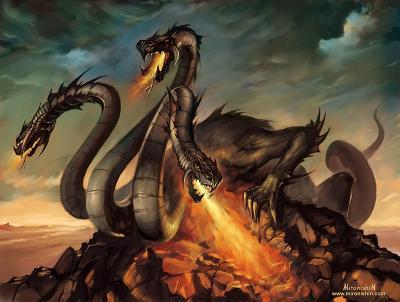
Slavic Europe
Slavic dragons have very different attitudes towards human In many legends, they represent brother and sister. While the sister represents violent weather and hates mankind, and she is in a violent battle with her brother, who is trying to protect the humans and their crops. The female is often taken to represent water, while the male has a firey personality. Dragons are portrayed as 3-headed, evil winged creatures with snake's bodies.
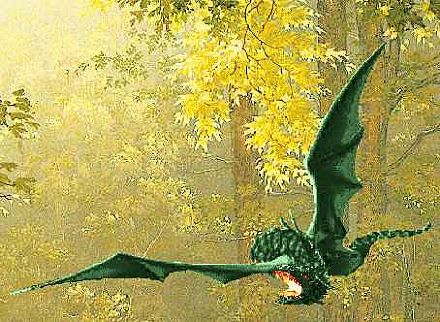
Iberian Peninsula
The Culebre is a giant winged serpent that typically lives in a cave and guards its treasure, and keeps xanas (nymph-like beings). They are immortal, but still subject to aging. One legend talks about a Pena Irel mountain that could mesmerize people with its glance, so a young man used a shiny shield to reflect its glance back onto itself. When the dragon mesmerized itself, he could kill it easily.
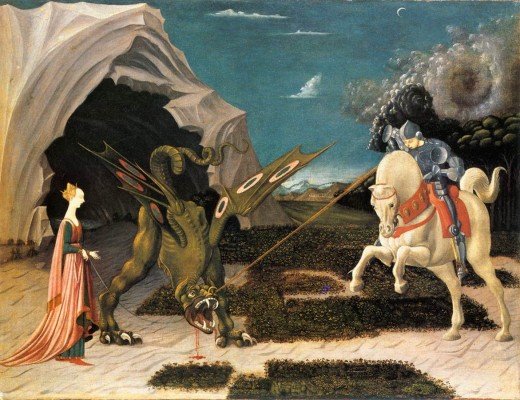
Italy
Many Italian legends, such as the one about Saint George, involve saints slaying dragons. Saints like Saint Mercurialis supposedly killed dragons, so they are most often portrayed slaying them. 'The Golden Legend' tells the story of Saint Margaret the Virgin, who was swallowed by Satan in the form of a dragon and escaped when the cross that she was wearing irritated the dragon's innards. This is another example that was very similar to the many legends about Popes and other saints slaying and driving dragons away from their towns.
Dragons are extremely complex creatures. They come in many different forms and there are legends about them all over the world, from China to the Aztecs. Because of this I was only able to cover one group of dragons. Which dragon or group of dragons would you like me to cover next?
